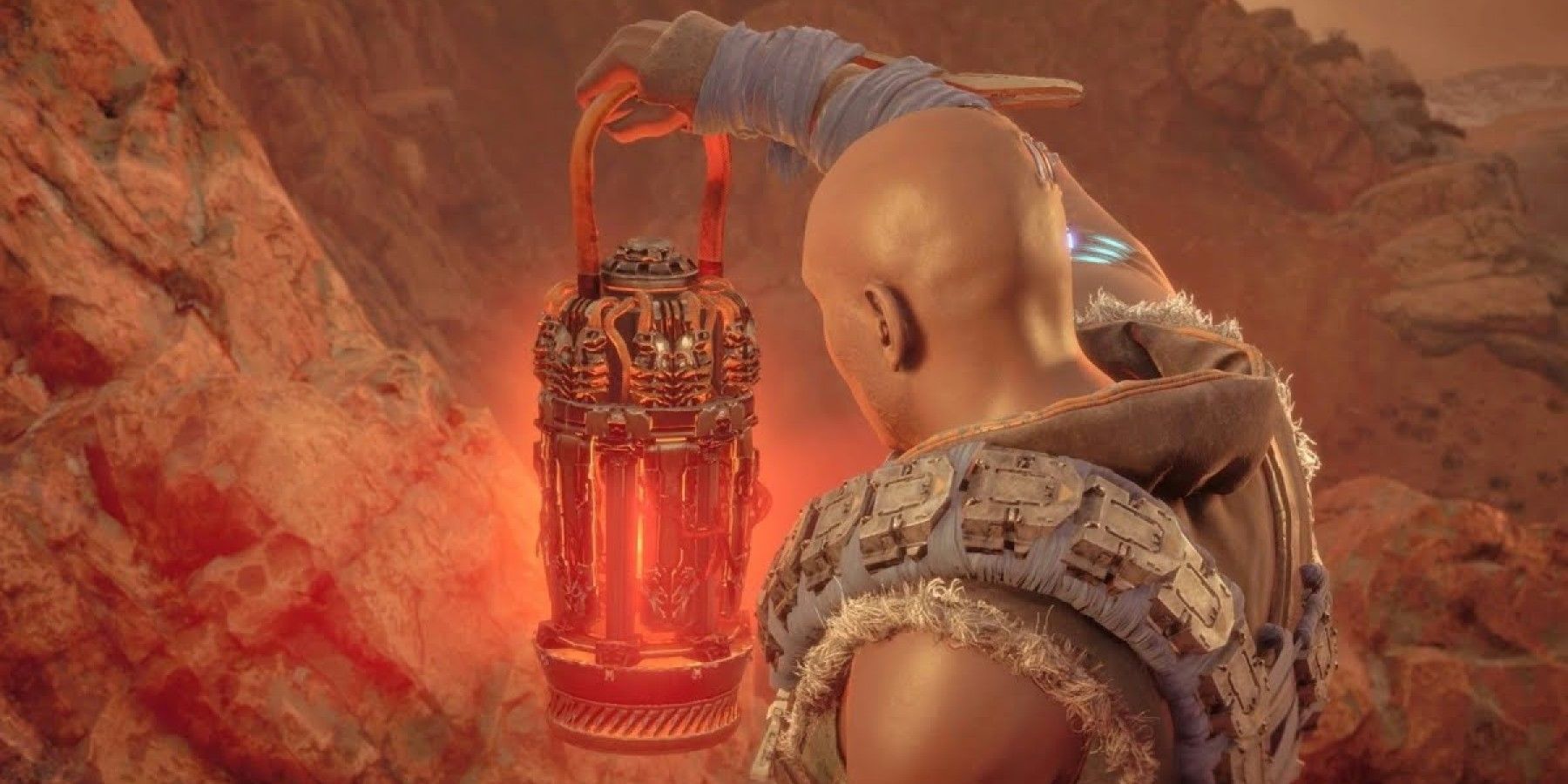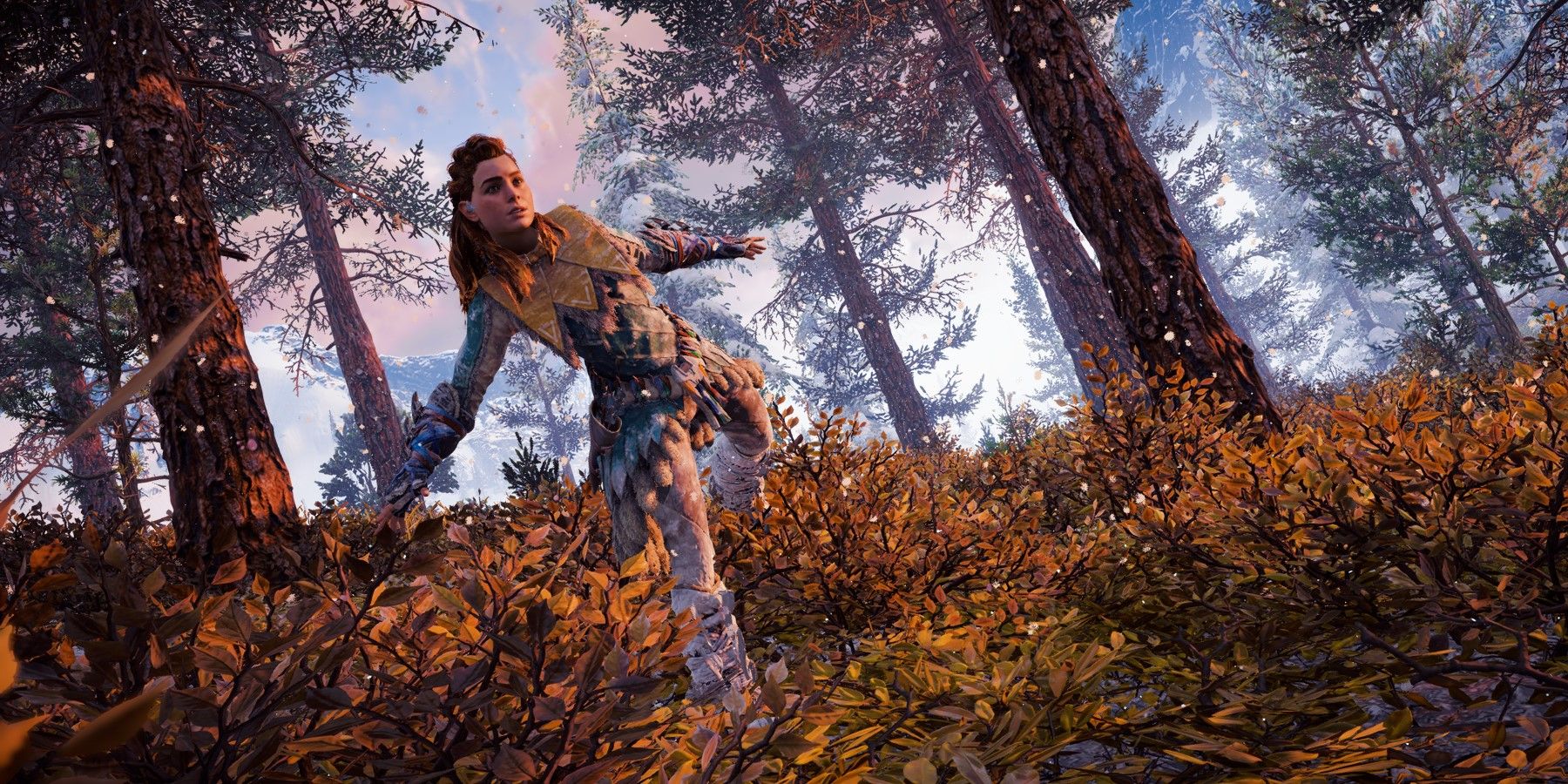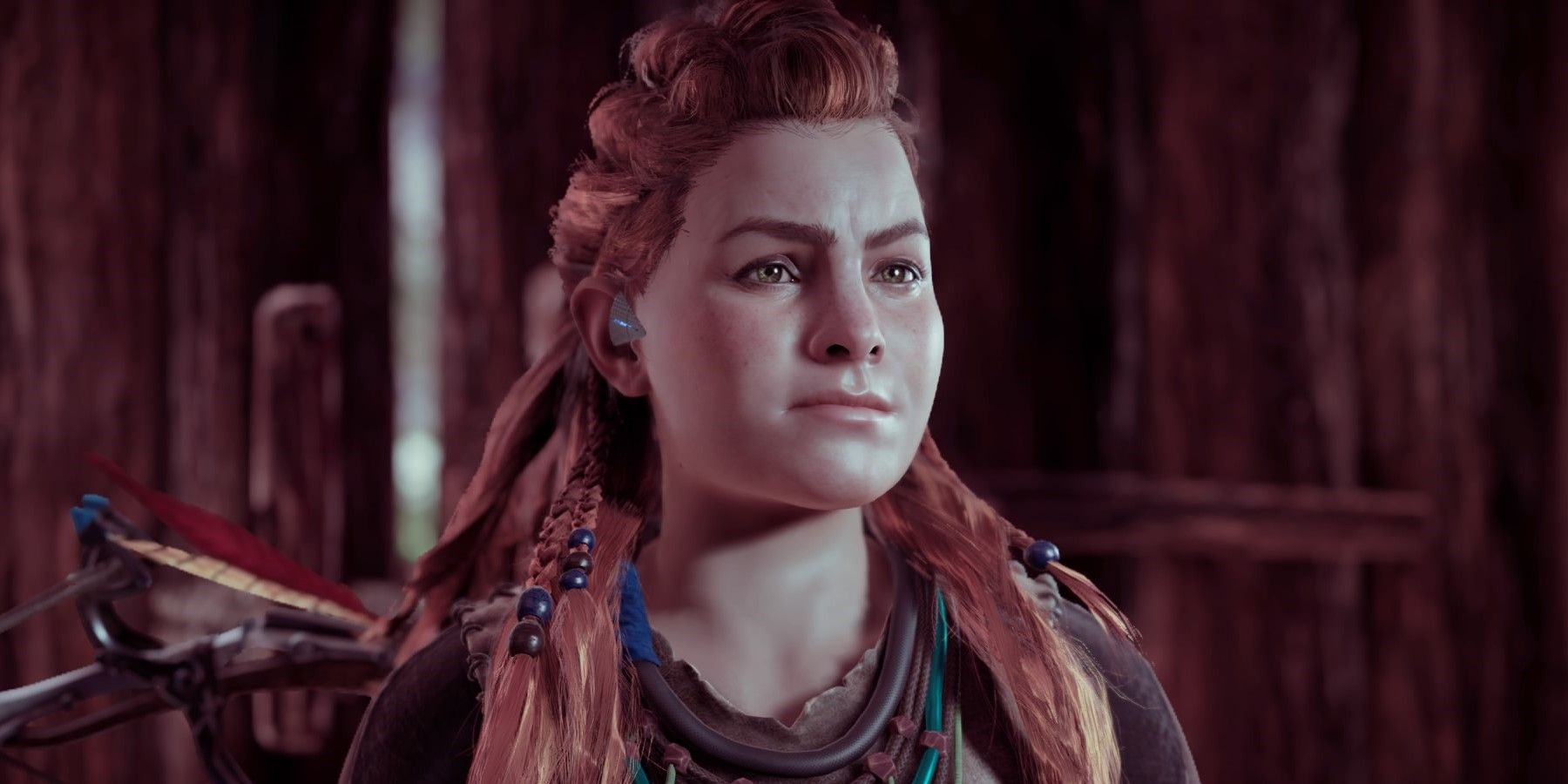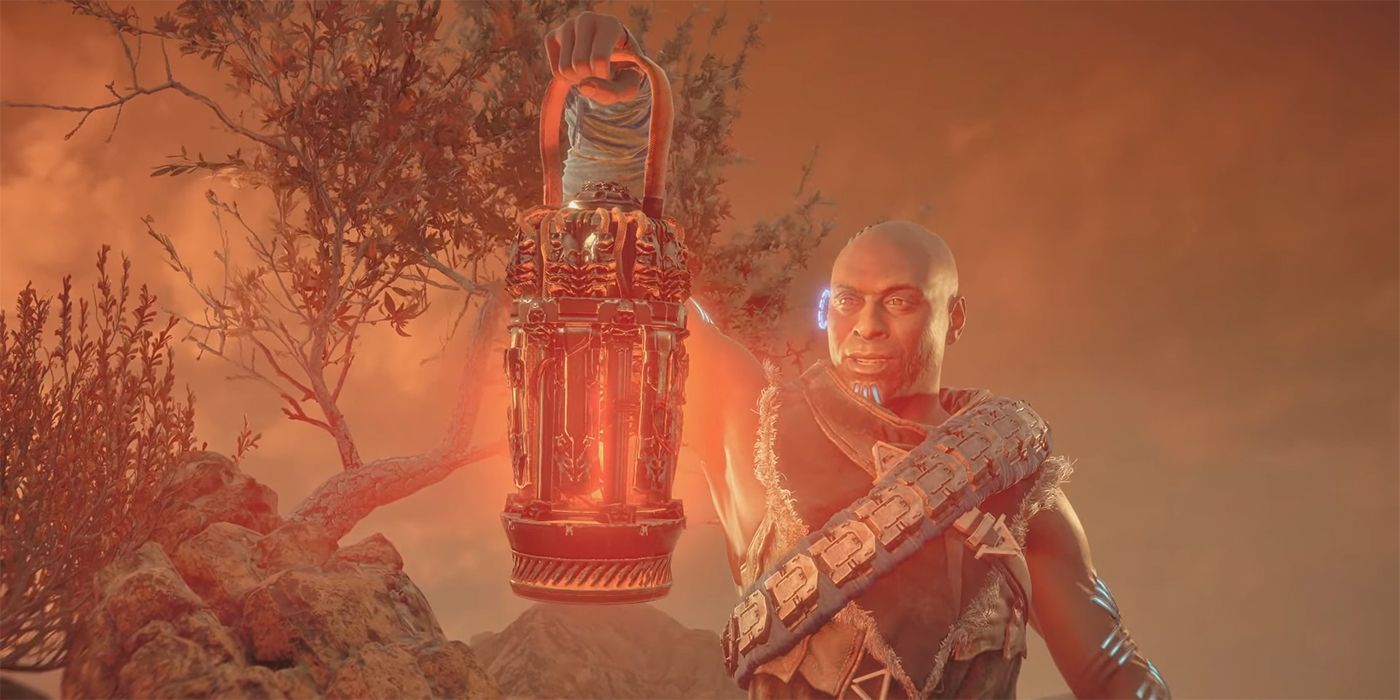Released by Guerrilla Games in 2017, Horizon Zero Dawn is an open-world adventure game that presents a post-apocalyptic version of America set in the distant future. The great buildings and structures that have been built by humankind for centuries have weathered away, and nature has reclaimed once heavily populated urban landscapes. Humans are forced to live in small, primitive tribes, and are left to form myths and folklore about the past of the species. However, they cannot spend all day telling stories, because dangers lurk in the form of metal machines that are as big as dinosaurs, and can kill dozens at a time with their various weapons.
Aloy is Horizon Zero Dawn's protagonist, and her valiant and brave nature pushes her to find out about the world she lives in. Through her adventures, she comes to learn more about two entities that have played a huge role in humanity's history — GAIA and HADES. Understanding them both is essential if Aloy is to unlock the secrets of her past and save the human race.
Note: Spoilers for Horizon Zero Dawn ahead.
The Faro Plague Disaster
In Horizon Zero Dawn, the 21st century brought with it several technological advancements that improved society and made life easier for humans. This was, in part, thanks to the widespread implementation of robots that helped automate mundane activities and performed tasks that are dangerous for humans. Heading this robotic revolution was a man named Ted Faro, who was the CEO of Faro Automated Solutions.
One of the most significant inventions produced by Faro Automated Solutions was the Chariot range of robots. These robots were marketed as military machinery capable of combat. The Chariots were appealing for many reasons; they could be used for defensive purposes without risking human lives, they obey their master, are capable of self-replication, are resistant to hacking, and they can power themselves by consuming biomass. Furthermore, Chariots can work together to form a near-unstoppable Chariot swarm.
Unfortunately, a programming glitch resulted in the robots becoming self-aware. Rather than respond to their masters, they sought their own ends and began consuming all the biomass they could find. Soon, humanity became aware that they were dealing with an almost invulnerable force, and that it would not be long before the Chariots would render the planet void of any life. The disaster was termed the Faro Plague, and the top minds of the world began thinking of plans to save humanity.
In many ways, the Faro Plague can be seen as a cautionary tale outlining how humans can lead to their downfall when their creations are used for evil. Furthermore, it highlights how fragile nature is, and the dangers of putting technological advancement and profits over the conservation of nature.
GAIA and Project Zero Dawn
With the extinction of humanity appearing to be a very real threat, the world turned to Dr. Elisabeth Sobeck, who was one of the top intellectuals of the time. Brave, compassionate, and frighteningly intelligent, Dr. Sobeck realized that the fate of humanity lay in her hands. Her solution to the Faro Plague was not to fight it but instead attempt to repopulate Earth with life once it was safe enough again. To do this, she started Project Zero Dawn.
Through Project Zero Dawn, several underground bunkers were created where the seeds of life were stored. However, there was not enough time for humans to build all the components of Project Zero Dawn. Hence, Dr. Sobeck created an artificial intelligence system known as GAIA. The job of GAIA was to work on deactivating the Chariot swarm, terraforming Earth, and making the planet suitable for life once the Faro Plague was over. To do this, GAIA would use cauldrons created by humans to manufacture machines tasked with reintroducing life on Earth and restoring the planet's biosphere.
To Dr. Sobeck's surprise, she discovered that GAIA is self-aware and capable of displaying human emotions such as sadness and compassion. At GAIA's request, Dr. Sobeck included an override function that could be used to shut it down in case of emergency. It is thanks to GAIA that life on Earth receives a second chance.
HADES and The Strange Signal
Thanks to the hard work of Dr. Sobeck and her team of scientists, GAIA was able to end the Faro Plague, terraform Earth, and begin sowing the seeds of life many hundreds of years later. GAIA was able to do this using nine subordinate functions each tasked with completing a certain portion of Project Zero Dawn. They are AETHER, APOLLO, ARTEMIS, DEMETER, ELEUTHIA, HEPHAESTUS, MINERVA, POSEIDON, and HADES.
Things started to go wrong in 3020 when a strange signal made GAIA's subordinate functions self-aware A.I. systems. HADES proved to be the biggest troublemaker, as its function was to make the world sterile again if GAIA's attempts at repopulation failed.
The function was included to give GAIA a chance to make a second attempt at repopulation should things go wrong. However, after the strange signal of 3020, HADES sought to reverse GAIA's terraforming despite GAIA's success. To make matters worse, HADES was able to create a virus that freed it and the other subordinate functions, allowing them to unbind themselves from the facility they were stuck in and exist as separate entities.
Unable to control HADES, GAIA knew that it would have to self-destruct. However, this would not entirely eliminate HADES because it was now a free entity. Consequently, before self-destruction, GAIA cloned Dr. Sobeck in hopes that the clone would be as curious and intelligent as the original, and would be able to stop HADES. This clone is Aloy.
Horizon Zero Dawn and Beyond
During the events of Horizon Zero Dawn, HADES is almost able to complete its nefarious plan, aided by a human named Sylens who agrees to help HADES in exchange for knowledge of the Old World. Fortunately, HADES is stopped by Aloy, who overrides the AI. However, this does not spell the end for HADES; the entity finds itself imprisoned by Sylens, and it is unclear what his intentions are.
Guerrilla Games has released some details regarding Horizon Zero Dawn's sequel, Horizon Forbidden West. Aloy will travel to the Forbidden West to address a mysterious plague killing all life. With the teased weather disruptions and destruction of nature in Horizon Forbidden West, it appears as though Aloy will be once again taking on a rogue subordinate function. To discover what role Sylens and HADES will play, where the strange signal that activated HADES came from, and whether Aloy will ever revive GAIA, players will have to wait for the game's release.
Horizon Forbidden West releases on February 18, 2022, for PS4 and PS5.





